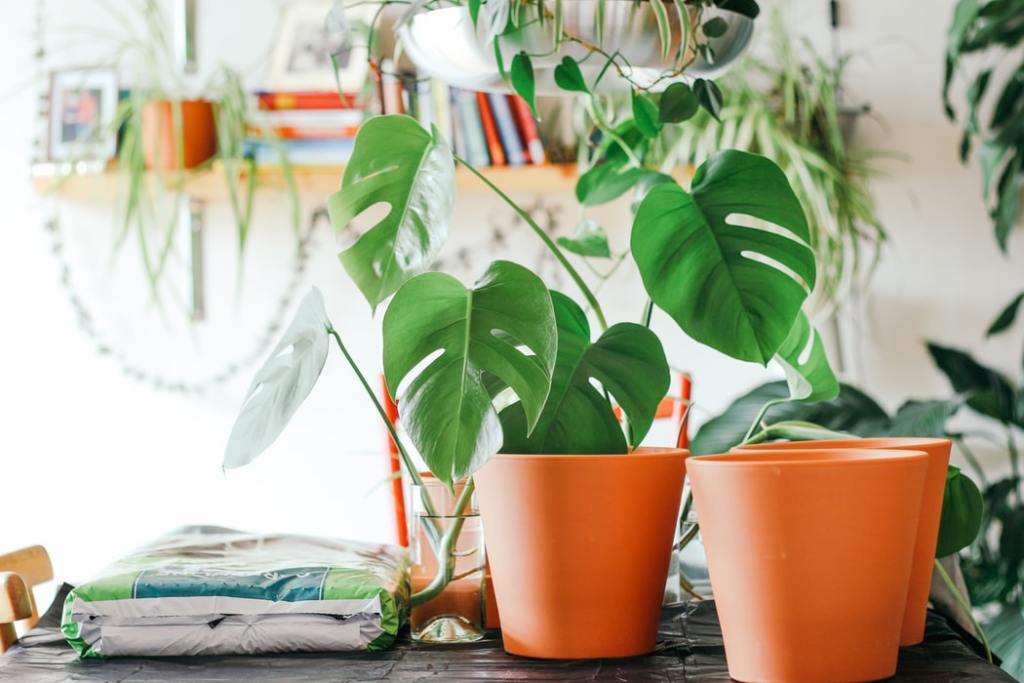If you’re a new houseplant enthusiast, you might be especially keen on finding a plant that’s impossible to kill. The truth is, any plant can die if you neglect it enough — or if you go the opposite direction and excessively water and over-feeding it! But with that said, there are many beginner-friendly varieties out there that can troop through the harshest conditions. Because of how hardy they are, these plants are perfect for houseplant beginners and those who might not have too much time on their hands to fuss over care requirements.
Before we dive into specific plants, let’s first talk about how to choose one. No matter how easy a species is, knowing how to pick out the right plant is a must, as a healthy plant will be less likely to die on you. A large plant with a well-established root system will adapt better to changing conditions. When you look at plants at your local nursery, inspect the foliage for pests and consider signs of overwatering, such as wilted and yellowing leaves. With all of this in mind, what are the hardiest plants out there? Keep reading to find out!

Pothos
Marked by their waxy, heart-shaped leaves, easy-going pothos are ubiquitous. They’re virtually impossible to kill — while they’ll thrive in bright indirect light and with consistent feeding during the growing season, they’ll still survive in low light and with no fertilizer. In fact, you can allow them to completely dry out before you water them.
Dracaena
Dracaenas are deceptively simple in appearance, but their upright, lance-shaped leaves can add a touch of texture to your space. Their foliage comes with patterns such as stripes and speckles as well as solid shades of green. Like pothos, they can thrive in low light. You’ll just want to make sure you have well-draining soil that you water consistently but never leave soggy.
Spider plant
The spider plant, or chlorophytum comosum, resembles, as its name implies, a spider. It features tufts of ribbon-like leaves that often have a light green (or dark green) stripe running down the middle. While this plant thrives on humidity and consistent watering, it will survive drier conditions, too. It’ll also tolerate low-light conditions, although bright indirect light and weekly feedings during the growing season will help it shoot out spiderettes the fastest!
ZZ plant
ZZ plants, or zamioculcas zamiifolia, are some of the easiest plants to maintain. With glossy, thick leaves on each stem, these plants have a reputation for being unkillable, even in sun-deprived office conditions! Because they have bulbous rhizomes, you’ll want to be careful with overwatering since doing so can cause the root bulb to ooze. Depending on how much light you give them, you can even get away with watering them around once a month.

Snake plant
Featuring tall, sword-shaped leaves, snake plants are notoriously easy. The most common variety is sansevieria trifasciata, which features marbled green leaves with bright yellow edges. You can find these semi-succulent plants with thick, cylindrical leaves (sansevieria cylindrica), too — the care is more or less the same. With snake plants, all you need is well-draining sandy soil and bright indirect light. Because snake plants have relatively shallow roots, you only need to water them when their soil dries out completely.
Philodendron
The trailing philodendron is similar to the pothos plant, except it has softer leaves and less defined petioles. The care is essentially the same: Allow the plant to dry out before you water it and give it plenty of bright indirect light. The philodendron also comes in upright varieties, such as the Xanadu and imperial green. With these, make sure you have enough horizontal space since they can grow outwards very quickly!
Ponytail palm
Ponytail palms resemble miniature trees with dark green, hair-like leaves that protrude from their bulbous, water-storing trunks. While their leaves might turn brown when their soil dries out, these plants can survive periods of heat, drought, and low light. They can remain stunning without much effort on your end, making them perfect for plant enthusiasts who are short on time.

Monstera deliciosa
If you start with a small plant or a cutting, a monstera deliciosa can initially be a challenge. But if you find yourself a plant with at least a few leaves and stems, you won’t encounter much trouble. The quintessential tropical print plants, monstera plants are defined by their heart-shaped leaves with gorgeous fenestrations! Their roots grow quickly, so you may find yourself repotting them roughly every year or so. They thrive with weekly feedings during the growing season and exposure to bright indirect light.
Fairy castle cactus
The charming fairy castle cactus, or cereus tetragonus, consists of many vertical stems that clump together, each with small spines along the edges. While it’s a slow grower with infrequent blooms, it’s definitely difficult to kill unless you overwater it or leave it out in temperatures below 30 degrees Fahrenheit. You really only need to make sure that you keep it in a sunny spot — full sun is best, but partial shade will also suffice.
Air plant
It doesn’t get any easier than air plants — they don’t even need soil! Air plants, which belong to the Tillandsia genus, will thrive as long as you remember to spritz them or soak them every few weeks. They’re epiphytic plants out in nature, which means that they grow on tree bark, rocks, and other surfaces instead of the ground. They often resemble a small cluster of curling leaves, which can come in many different colors. Every few weeks, remember to soak your plant in water for roughly half an hour — spritzing will also work during the cooler seasons. To help them bloom and grow bigger, give them plenty of bright indirect light as well. Occasionally, you can feed them by adding a weak fertilizer to your soaking water.
While some houseplants can be picky in terms of care requirements, you’ll find many varieties out there that are more or less impossible to kill. Instead of reaching for finicky ferns or prayer plants, start your plant journey with a low-maintenance snake plant or philodendron. You’ll be rewarded with lush foliage and bountiful growth — even if you occasionally forget to water!
Editors' Recommendations
- Stunning Monstera plants that you should add to your indoor plant collection
- Beyond basil and cilantro, add these unique plants to your indoor herb garden
- 5 easy-care spider plant varieties perfect for any home garden
- Easy hoya plants to add to your indoor plant collection
- Do ZZ plants cause cancer? Here’s the definitive answer




